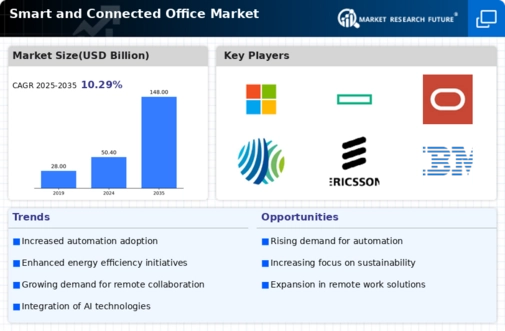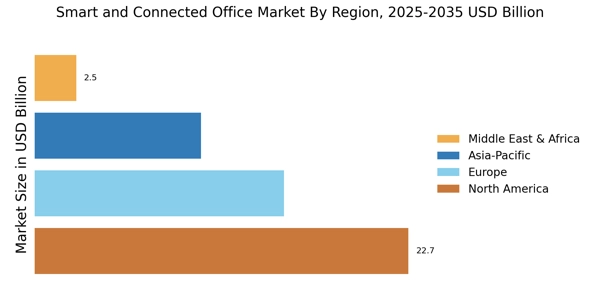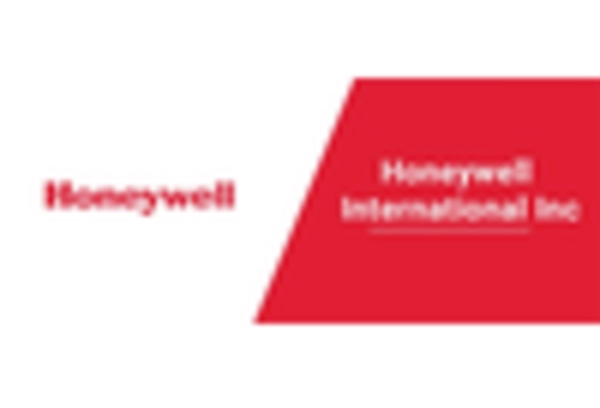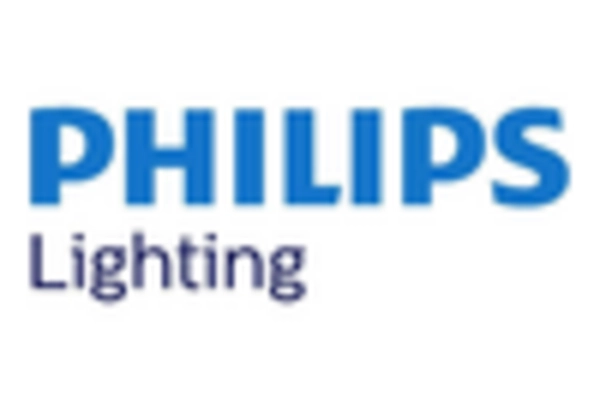Focus on Energy Efficiency
Energy efficiency remains a critical driver within the Smart and Connected Office Market. Organizations are increasingly prioritizing sustainable practices to reduce their carbon footprint and operational costs. The integration of smart energy management systems allows for real-time monitoring and control of energy consumption, leading to potential savings of up to 25%. Moreover, regulatory frameworks and incentives aimed at promoting energy-efficient buildings further bolster this trend. As businesses strive to meet sustainability goals, the demand for smart office solutions that enhance energy efficiency is expected to surge. This focus on sustainability not only aligns with corporate social responsibility initiatives but also positions organizations competitively within the Smart and Connected Office Market, as consumers and stakeholders increasingly favor environmentally conscious practices.
Emphasis on Flexible Workspaces
The Smart and Connected Office Market is significantly influenced by the growing emphasis on flexible workspaces. Organizations are increasingly adopting hybrid work models, which necessitate the creation of adaptable office environments. This trend is driven by the need to accommodate diverse work styles and preferences, allowing employees to choose their work settings. Research indicates that companies implementing flexible workspaces report a 20% increase in employee satisfaction and engagement. Consequently, the demand for smart office solutions that support these flexible arrangements is on the rise. Features such as hot-desking, collaborative spaces, and integrated technology platforms are becoming essential components of modern office designs. As this trend continues to evolve, the Smart and Connected Office Market is poised for expansion, with a projected compound annual growth rate of over 15% in the next few years.
Enhanced Data Security Measures
In an era where data breaches and cyber threats are prevalent, the Smart and Connected Office Market is witnessing a heightened focus on enhanced data security measures. Organizations are investing in advanced cybersecurity solutions to protect sensitive information and maintain compliance with regulations. The integration of smart technologies necessitates robust security protocols, as connected devices can be vulnerable to attacks. Research indicates that companies prioritizing cybersecurity experience a 50% reduction in data breach incidents. As businesses increasingly recognize the importance of safeguarding their digital assets, the demand for secure smart office solutions is likely to grow. This trend not only ensures the integrity of organizational data but also fosters trust among employees and clients, thereby strengthening the overall position of the Smart and Connected Office Market.
Rise of Remote Collaboration Tools
The Smart and Connected Office Market is significantly shaped by the rise of remote collaboration tools. As organizations embrace hybrid work models, the need for effective communication and collaboration solutions becomes paramount. Tools that facilitate seamless interaction among remote and in-office employees are essential for maintaining productivity and engagement. The market for collaboration software is projected to grow substantially, with estimates suggesting an increase of over 20 billion in revenue by 2026. This surge is driven by the demand for features such as video conferencing, project management, and real-time document sharing. As businesses continue to adapt to changing work dynamics, the Smart and Connected Office Market is likely to expand, with a focus on integrating innovative collaboration tools that enhance teamwork and connectivity.
Integration of Advanced Technologies
The Smart and Connected Office Market is experiencing a notable shift towards the integration of advanced technologies such as artificial intelligence, machine learning, and the Internet of Things (IoT). These technologies facilitate enhanced operational efficiency and improved decision-making processes. For instance, the implementation of AI-driven analytics allows organizations to optimize space utilization and energy consumption, which is projected to reduce operational costs by up to 30%. Furthermore, the rise of smart devices and sensors enables real-time monitoring of office environments, thereby enhancing employee productivity and satisfaction. As organizations increasingly recognize the value of these technologies, the Smart and Connected Office Market is likely to witness substantial growth, with investments in smart solutions expected to reach billions in the coming years.


















Leave a Comment